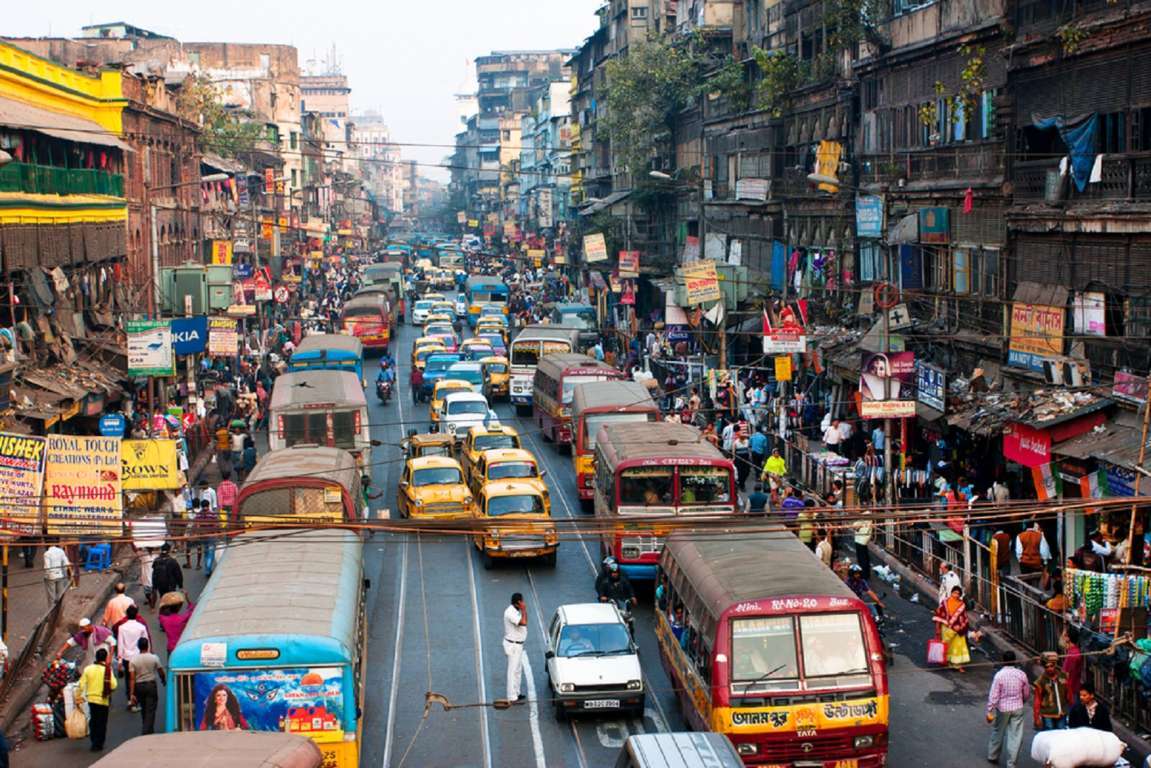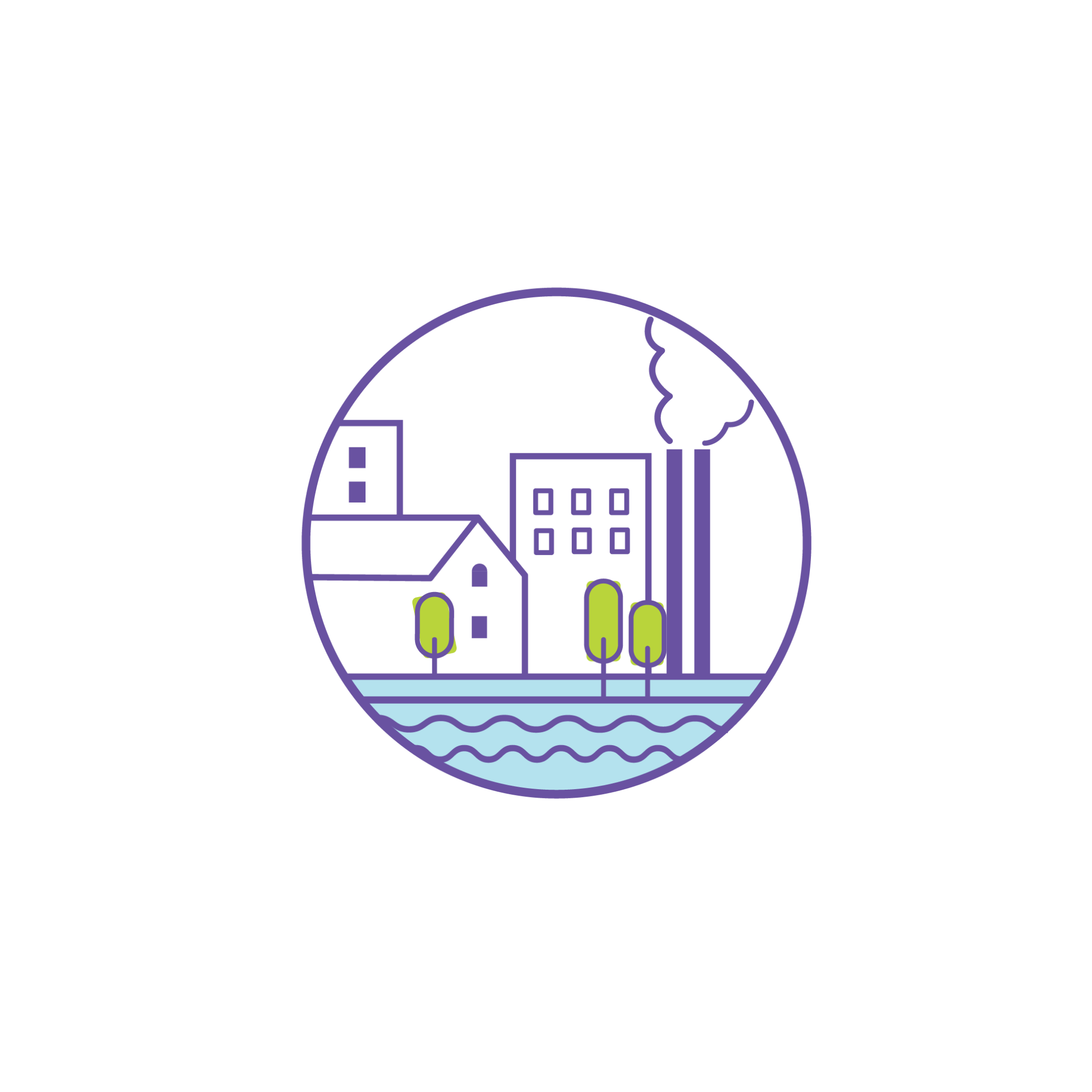Plastic Roads: Use of Waste Plastic in Construction of Roads
ABSTRACT
The
global plastic production is increasing rapidly with rise in population and
changes in life style. This makes the disposal of plastic is becoming
complicated because of the non-biodegradable property. So, it is better to
recycle than disposal. One of the trends in recycling of plastic is use in
construction of roads. This type of recycling can also help in protecting the
environment from the greenhouse gases that are exposed to atmosphere while
disposal. The waste plastic in form of bottles, cups, caps, etc are made in
form of powder or blended with crusher and coated over the aggregate and
bitumen mixture by heating process for roads construction. This polymer coated
aggregate and bitumen mixture shows high strength, better binding property,
stability, and increase in wear resistance, better durability and tear of
roads. This makes the recycle of plastic in an efficient manner.
1. INTRODUCTION
Today every sector around the world from agriculture to electrical,
packing, automobile, building construction, communication sectors are widely
using plastic. The usage was started after the industrial revolution and its
large-scale production seemed to be cheap. Plastic is light in weight, moisture
resistant, flexible and very inexpensive. These qualities increase our
propensity towards plastic and hence making its use very common. It has
revolutionized all spheres of life. But this plastic ultimately becomes a
waste. It is a common site both in urban and rural areas to see plastic wastes
littering the roads. It forms the major portion of the total municipal solid
wastes (MSW). Generally, plastic is a non-biodegradable and many research found
that plastic take around 4500 years to degrade. Several studies proven that the
disposal of plastic causes many health problems and also reduces the fertility
of soil. The plastic production over the world has crossed 400 million tons and
the recycling of plastic is only 10%. Its improper disposal can cause serious
health hazards in humans.
Fig
1: Increase in consumption of plastic year by year
It is estimated that approximately 10 thousand tons per
day (TPD) of plastics waste is generated i.e., 9% of 1.20 lacs TPD of MSW in
India. The plastic waste constitutes two major categories of plastics; (i)
Thermoplastics and (ii) Thermoset plastics. Thermoplastics, constitutes 80% and
thermoset constitutes approximately 20% of total post-consumer plastics waste
generated in India. The Thermoplastics are recyclable plastics which include;
Polyethylene Terephthalate (PET), Low Density Poly Ethylene (LDPE), Poly Vinyl Chloride
(PVC), High Density Poly Ethylene (HDPE), Polypropylene (PP), Polystyrene (PS)
etc. However, thermoset plastics contains alkyl, epoxy, ester, melamine
formaldehyde, phenolic formaldehyde, silicon, urea formaldehyde, polyurethane,
metalized and multilayer plastics etc. The use of plastic materials such as
carry bags, cups, etc. is constantly increasing. Nearly 50 to 60% of the total
plastics are consumed for packing.
Fig 2: Current scenario of waste plastic
In order to contain this problem experiments have been
carried out whether this waste plastic can be reused productively. Waste
plastic such as carry bags, disposable cups and laminated pouches like chips,
pan masala, aluminum foil and packaging material used for biscuits,
chocolates, milk and grocery items can be used for surfacing roads.
2. PLASTIC
ROADS
Dr.
Rajagopalan Vasudevan is an Indian scientist working mainly in waste
management. He developed an innovative method to reuse plastic waste to
construct better, more durable and very cost-effective roads. Dr. Vasudevan,
known as the ‘Plastic Man of India,’ has been praised by Prime Minister
Narendra Modi and also awarded the Padma Shri in the Year 2018. His method has been used to lay 5,000 kms of
roads across 11 states using recycled plastic. Plastic waste can be used as
coating over aggregate and this coated stone can be used for road construction.
The main function of plastic is to be effectively utilized in construction of
flexible pavement as a binder material for replacing the content of bitumen. By
this process a road of 1 km length and 3.375m width of single lane can consumes
10,00,000 carry bags and the road strength is increased by 100% and there found
no any pot hole. On other side, the road traffic is increasing. The load
bearing capacities of the road are to be increased. So, need to take care of both
these aspects. The use of this innovative technology will not only strengthen
the road construction but also increase the road life as well as will help to
improve the environment.
The plastic wastes have been utilized in the construction of pavements in India since a decade now. The road constructed using waste plastic i.e., carry bags, bottles, cups and thermocoles is known as ‘Plastic Road’. They are found to be perform better compared to those constructed with conventional bitumen. Plastic used in road construction is not new. It is already in use as PVC or HDPE pipe mat crossings built by cabling together PVC (polyvinyl chloride) or HDPE (high-density poly-ethylene) pipes to form plastic mats. The plastic roads include transition mats to ease the passage of tyres up to and down from the crossing. Both options help protect wetland haul roads from rutting by distributing the load across the surface. But the use of plastic-waste has been a concern for scientists and engineers for a quite long time.
Fig 3: India’s first
plastic road (Jamshedpur)
3. SALIENT
FEATURES OF THE POLYMER-WASTE-BITUMEN ROAD
The Road
strength of this road is twice stronger than normal roads; resistance towards
water stagnation i.e., no potholes are formed; less bleeding during summer; burning
of plastics waste could be avoided; it doesn’t involve any extra machinery; it
doesn’t increase cost of road construction; and it helps to reduce the
consumption of bituminous mix vis-à-vis reduce cost.
4. CONCEPT
OF UTILIZATION OF WASTE PLASTIC IN BITUMINOUS MIXES FOR CONSTRUCTION OF ROAD
I. Materials
Used
The
materials used for carrying out the present research are:
Aggregates,
Bitumen,
Waste Plastic Modifiers
The
various laboratory tests were carried out on these materials and the results
were computed.
Aggregate:
Aggregates
used in surface course can be divided into two types according to their size:
coarse aggregates and fine aggregates. Coarse aggregates are generally defined
as those retained on the 2.36 mm sieve. Fine aggregates are those that pass
through the 2.36 mm sieve and are retained on the 0.075 mm sieve. Aggregates
required for the research work will be procured from the local market. The
properties of the aggregates are of considerable significance to the highway
engineer. Some of the desired properties of these aggregates are strength,
durability, toughness, hardness, etc.
Bitumen:
Bitumen
acts as binding agent for aggregates in bituminous mixes. Generally, in India
bitumen used in road construction of flexible pavement is of grades 60/70 or
80/100 penetration grade. Both the grade of bitumen confirming to BIS standards
will be used for the present studies. Bitumen may further be divided into
petroleum asphalt or bitumen and native asphalt. There are different forms in
which native asphalts are available. These are those which occur in a pure or
nearly pure state in nature. The viscosity of bitumen is sometimes reduced by a
volatile diluent; this material is called cutback. When bitumen is suspended in
a finely divided condition in an aqueous medium and stabilized with an
emulsifier, the material is known as emulsion.
Waste Plastic Modifiers:
Modifiers
are generally used to enhance the properties of bituminous concrete mixes by
reducing the air void present between the aggregates and also to bind them
together so that no bleeding of bitumen will occur. For the present study
plastic waste such as carry bags, water bottles, milk packets, glasses, cups,
etc will be used as a modifier.
II.
Processing Details
a. Collection
of waste plastic,
b. Cleaning
and shredding of waste plastic,
c. Mixing
of shredded waste plastic, aggregate and bitumen in central mixing plant.
a.
Collection of waste plastic:
Waste
plastic is collected from roads, garbage trucks, dumpsites or compost plants,
or from school collection programs, or by purchase from rag-pickers or
waste-buyers at Rs 5-6 per kg Rag-pickers.
Fig 4: Collection of
plastic waste
b.
Cleaning and shredding of waste
plastic
Waste
plastic litter in the form of thin-film carry-bags, use-and-throw cups, PET
bottles, etc. these are sorted, de-dusted, washed if necessary. Fig. cleaning
process Plastic waste which is cleaned is cut into a size between 1.18mm.
Fig 5: Shredded plastic
waste being sprayed over hot aggregates
c.
Mixing of shredded waste plastic,
aggregate and bitumen in central mixing plant
The
aggregate mix is heated to 165Ëšc (as per the HRS specification) in central
mixing plant. Similarly, the bitumen is to be heated up to a maximum of 160Ëšc.
The 8% of waste plastic to the weight of bitumen are added in the conveyor belt
or special mechanical device is developed which will spray the plastics inside
the chamber to coat the plastics effectively. Central mixing plant helps to
have better control of temperature and better mixing of this material thus
helping to have a uniform coating and heated bitumen is also sprayed. Fig.
central mixing plant.
Fig 6: Bitumen being
mixed with plastic coated aggregates
III. Laying
of Bitumenous mix
a. Mix
Design by Marshall method
b. Optimum
waste plastic content
a. Mix
Design by Marshall method:
Laboratory
studies were carried out at the Centre for Transportation Engineering of Bangalore
University on the possible use of the processed plastic bags as an additive in
bituminous concrete mixes. The material used in this study was supplied by M/s
KK Poly Flex (P) Ltd., Bangalore. The processed plastic was used as an additive
with heated bitumen in different proportions (ranging from zero to 12 % by
weight of bitumen) and mixed well by hand, to obtain the modified bitumen. The
properties of the modified bitumen were compared with ordinary bitumen. It was
observed that the penetration and ductility values of the modified bitumen
decreased with the increase in proportion of the plastic additive, up to 12 %
by weight. The softening point of the modified bitumen increased with the
addition of plastic additive, up to 8.0 %by weight. Auto Marshall Compactor
Auto Marshall tester 11.
b. Optimum
waste plastic content:
Varying
percentages of waste plastic by weight of bitumen was added into the heated
aggregates Marshall specimen with varying waste plastic content was tested for
bulk density and stability Maximum value of stability was considered as
criteria for optimum waste plastic content Studies were carried out on
Bituminous mixes using 60/70 grade bitumen having average Marshall Stability
Value (MSV) of 1300 kg at optimum bitumen content of 5.0 % by weight of the
mix. Further studies on mixes were carried out using the modified binder
obtained by the addition of varying proportions of processed plastic bags
(percentage by weight of bitumen) with the conventional 80 /100 grade bitumen.
The optimum modified binder content fulfilling the Marshall Mix design criteria
was found to be 5.0 % by weight of the mix, consisting of 8.0 % by weight of
processed plastic added to the bitumen. The average MSV of the mix using the
modified binder was found to be as high as 1750 kg at this optimum binder
content, resulting in about three-fold increase in stability of the BC mix,
which contains 4.6 % bitumen plus 8 % processed plastic by weight of bitumen,
i.e.,0.4 % processed plastic by weight of the mix.
In
order to evaluate the ability of the mix prepared with the above-modified
bitumen to withstand adverse soaking condition under water, Marshall Stability
tests were conducted after soaking in water at 60 Co for 24 hours. The average
MSV of the BC mix with modified binder (using 8 % processed plastic by weight
of bitumen, as above) was found to increase by about 2.6 times of the mix with
ordinary bitumen. Further laboratory studies carried out on the BC mixes using
this modified binder also indicated note worthy increase in fatigue life under
repeated application of loads.
Dry process is recommended for isolated
works.
It is
recommended that the percentage of shredded waste plastic will be 8% by CRRI, while
the same is specified as 10% by Dr. Vasudevan. However, we can adopt 8% as the
optimum plastic content for blending the bitumen in the construction of plastic
roads. The details of the process are given below. Bitumen of grades 60/70 or
80/100 can be used as binder as in case of conventional method.
With Mini Hot Mix Plant
The
stone aggregate mix (as per specification) is transferred to the mix cylinder
where it is heated to 165Ëšc (as per the IRC specification) and then it is
transferred to the mixing puddler (Temperature can be monitored using IR
thermometer), while transferring the hot aggregate into the puddler, calculated
quantity of shredded plastics is sprayed over the hot aggregate within
30seconds. The sprayed plastic films melt and gets coated over the aggregate,
thus forming an oily coating. Similarly, the bitumen is to be heated to a
maximum of 160Ëšc in a separate chamber and kept ready (The temperature should
be monitored to have good binding and to prevent weak bonding). At the mixing
puddler, the hot bitumen is added over the plastic-coated aggregate and the
resulted mix is used for road construction. The road laying temperature is
between 110Ëšc to 120Ëšc. The roller used is normal 8 ton capacity.
5. COMPARISON
OF PROPERTIES IN ORDINERY ROAD AND PLASTIC ROAD
The durability of the roads laid out with shredded plastic waste is much more compared with roads with asphalt with the ordinary mix. Roads laid with plastic waste mix are found to be better than the conventional ones. The binding property of plastic makes the road last longer besides giving added strength to withstand more loads. While a normal 'highway quality' road lasts four to five years it is claimed that plastic-bitumen roads can last up to 10 years. Rainwater will not seep through because of the plastic in the tar. So, this technology will result in lesser road repairs. And as each km of road with an average width requires over two tons of polyblend, using plastic will help reduce non-biodegradable waste. The cost of plastic road construction may be slightly higher compared to the conventional method. However, this should not deter the adoption of the technology as the benefits are much higher than the cost. Plastic roads would be a boon for India’s hot and extremely humid climate, where temperatures frequently cross 50°C and torrential rains create havoc, leaving most of the roads with big potholes. Already, a kilometre long test-track has been tested in Karnataka using this technology. The government is keen on encouraging the setting up of small plants for mixing waste plastic and bitumen for road construction. It is hoped that in near future we will have strong, durable and eco-friendly roads which will relieve the earth from all type of plastic-waste.
Fig 7: Durability of Plastic Road
|
Sr. No. |
Properties |
Plastic road |
Ordinery
road |
|
1 |
Marshall
stability value |
ü More (200-300%) |
û Less (25%) |
|
2 |
Binding
property |
ü Better |
û Good |
|
3 |
Softening
point |
ü Less |
û More |
|
4 |
Penetration
value |
ü More |
û Less |
|
5 |
Tensile
strength |
ü High |
û Less |
|
6 |
Rutting
|
ü Less |
û More |
|
7 |
Stripping
(Pot Holes) |
ü Less |
û More |
|
8 |
Seepage
of water |
ü Very less |
û Present |
|
9 |
Durability
of the roads |
ü Better |
û Good |
|
10 |
Cost
of pavement |
ü Less |
û Normal |
|
11 |
Maintenance
cost |
ü Almost nil |
û More |
|
12 |
Environment
friendly |
ü Yes |
û No |
1. Economy:
One
of the main factors to be considered in any technology and global market is
economy. In order to compare the cost of construction between ordinary road and
plastic-coated bituminous road, consider a road of dimensions 3.75m width and
1Km distance.
Cost of Waste plastic = Rs. 5/- per Kg
Cost of bitumen = Rs. 50/- per Kg
Generally, for 1 Km of road 10 tons of bitumen is
required.
Cost of bitumen per Km = 50 × 100000 = 50,0,000/-
For plastic coated bituminous road,
It is already discussed above that 10% of plastic is
required.
Amount of bitumen required for Plastic coated
bituminous road = 9000Kg
Amount of plastic required = 1000Kg
Cost of bitumen in plastic coated bituminous road + Cost
of plastic required = 9000×50+5,000
Total cost = 4,55,000/-
Savings in construction per Km = (cost of bitumen per
ordinary road - cost of plastic-coated bituminous road per Km)
= 5,00,000 - 4,55,000
= 45,000/- per Km
2. Advantages:
·
Disposal of waste plastic will no longer
be a problem.
·
The up-gradation cost is less compared to
normal roads.
·
The load with standing property also
increased.
·
The cost of road construction also
reduced.
·
Road strength also increases.
·
Plastic roads could have a hollow space to
facilitate wiring, pipe lines, etc.
·
Plastic roads have less moisture
absorption than normal roads.
·
Better resistance to rain water and
stagnation.
·
Increases binding strength of the
aggregate and bitumen.
·
Durability of road is increases when
compared to normal road.
·
Reduced construction time on site
3. Disadvantages:
·
The heat treatment of plastic may lead to
release of harmful gases to atmosphere.
·
Roads made of pure plastic may leads to
decrease in strength with small variation in temperature.
· The plastic may break into micro plastic particles due to atmospheric oxidation.
6. CONCLUSION
The
generation of waste plastics is increasing day by day. The plastics show
adhesion property in their molten state. Plastics will increase the melting
point of the bitumen. Hence, the use of waste plastics for pavement is one of
the best methods for easy disposal of waste plastics. Moreover, plastic is not
recyclable and using them in road construction will help in the disposal of
these plastic wastes in an eco-friendly manner. The plastic-coated bitumen
increases the melting point. Polymer Modified Bitumen is used due to its better
performance. The plastic-coated bitumen helps in binding strength and increases
the area of contact between the aggregate and bitumen. It also helps in
eliminating of the voids. Due to the elimination of voids, road show the
resistance towards the oxidation of bitumen by entrapped air. This property
makes the plastic-coated bitumen road to withstand heavy traffic and show
better durability
Plastic roads will be most feasible for a country like India, where temperature is around 50ËšC and the heavy monsoons too create havoc, leaving the roads with potholes and ruts. It is hoped that in near future we will have strong, durable and eco-friendly roads that will relieve the earth from all type of plastic waste.
Related Articles
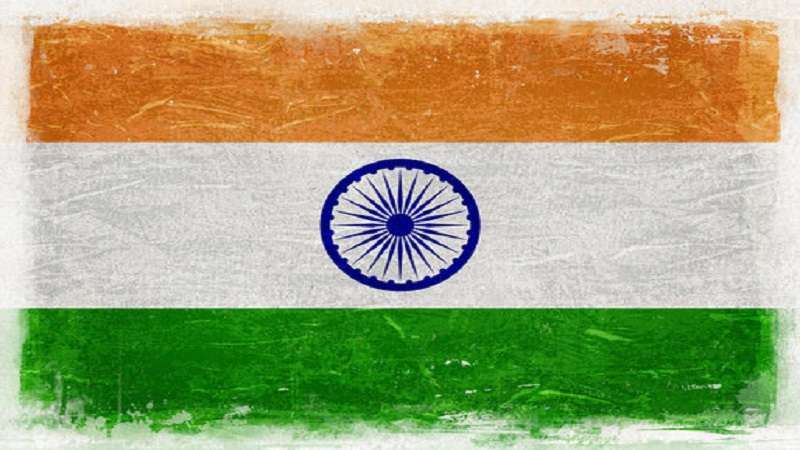
URBAN PLANNING AND ECONOMY AFTER BOYCOTTING CHINA PRODUCTS IN INDIA
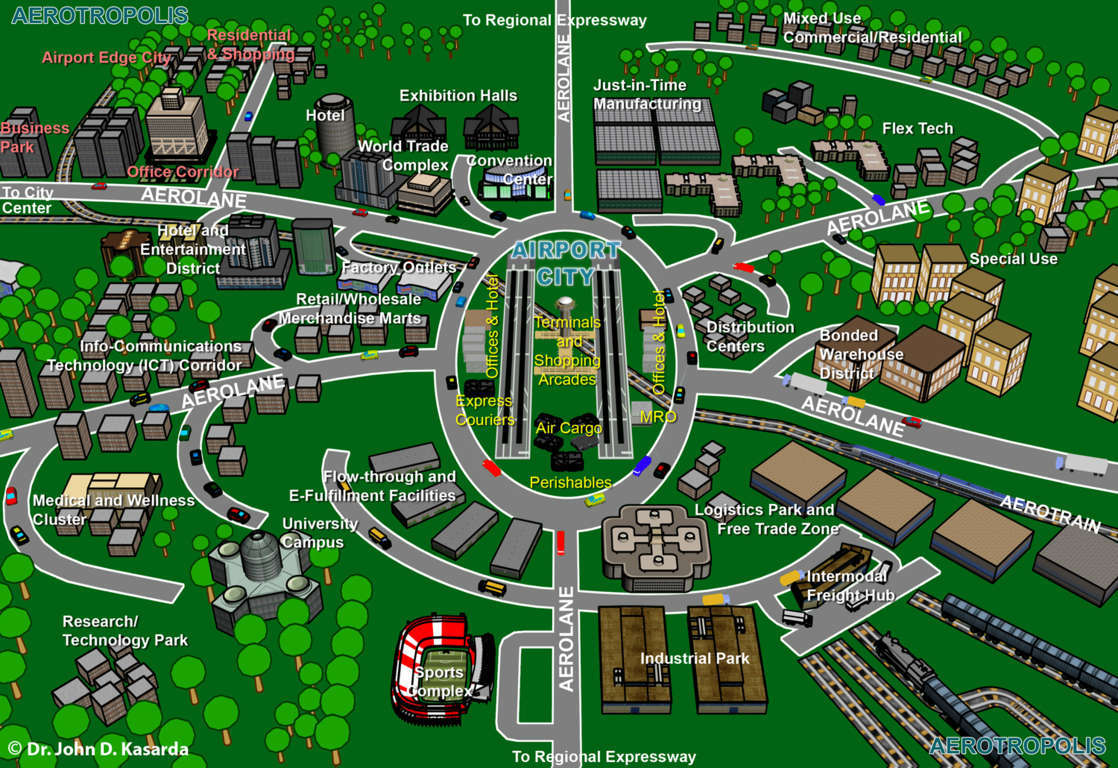
AEROTROPOLIS – The new era of connectivity
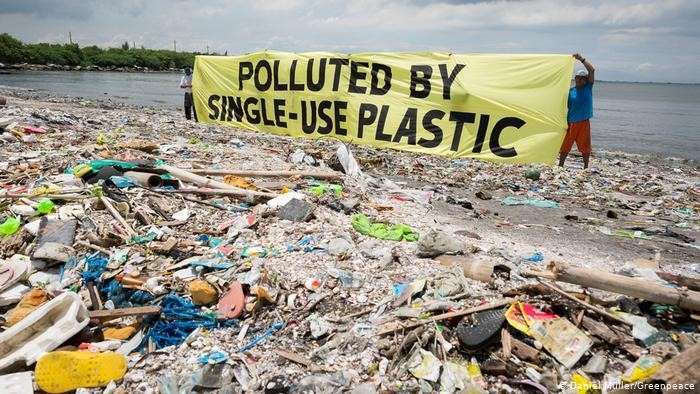
DISSOLVABLE PLASTIC: A SOLUTION TO POLLUTION
Indian cities can better leverage technology
